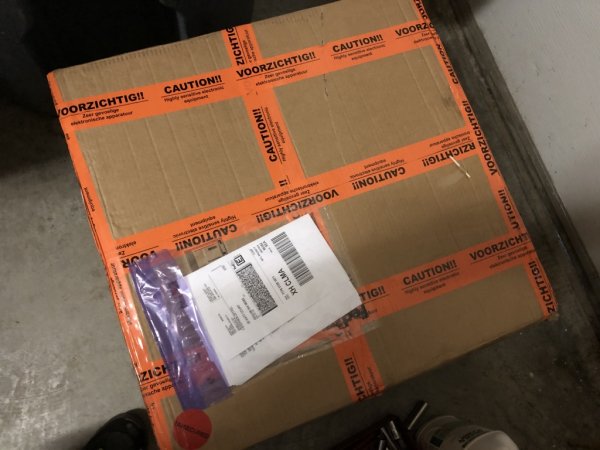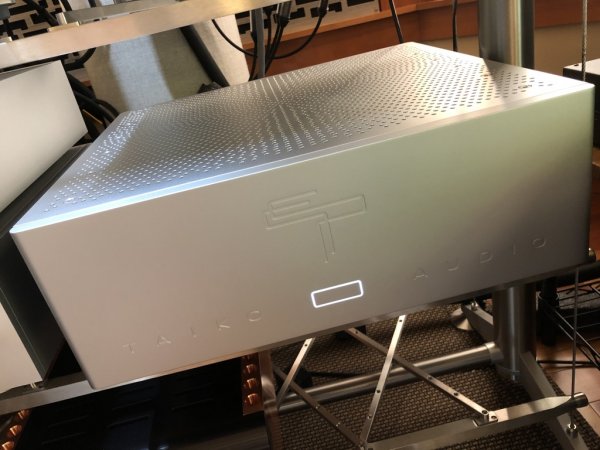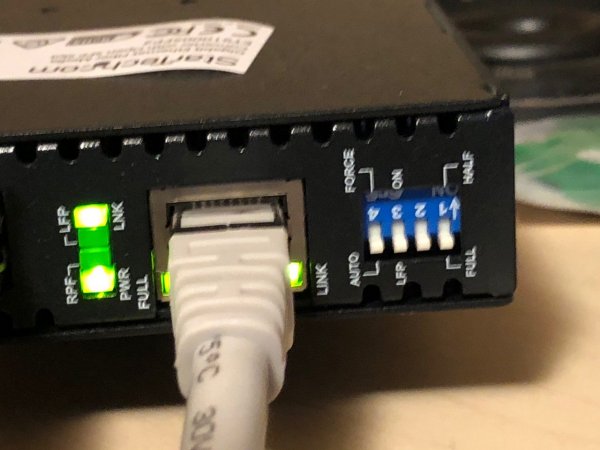I’ve been enjoying Emile’s SGM Extreme in my home for a little over two weeks now. It is providing far and away the best digital music I’ve ever heard, in my home or anywhere else. The density of sound, depth, nuance, texture and sheer realism easily rivals the best analog playback from my turntable. I’ve found that right out of the box with no optimization other than using the Startech FMC, SFPs and fiber optic recommended earlier in this thread, the Extreme delivers an emotionally involving musicality from all but the poorest digital transfers, whether streaming from an on-line service, serving music from my NAS, or playing files directly from on-board storage. I’ve also found that while the Extreme sounds superb as-is and certainly doesn’t demand heroic measures elsewhere in the system or LAN, it is transparent enough to reward careful experimentation and optimization with even higher levels of sonic performance.
During the initial set-up, Emile and I traded e-mails — mine in the form of progress reports and questions that occurred along the way, Emile’s in the form of quick replies to my questions and cheerful encouragement as I worked my way through the process of getting everything set up and my music library transferred to the Extreme’s internal storage. Note that included in the purchase of an Extreme is Emile’s services to perform all the setup, transfer of files, and operating system optimization, accomplished by logging into the Extreme via Teamviewer; I opted to do as much as possible myself because I learn and retain information best when I do things myself rather than watching someone else do them for me.
At the end of the process Emile requested I pull together my chronology of set up, the various questions I had and what seems to be working the best for me, and post my experience to the group to give new users and potential customers a feel for what getting the Extreme playing its best involves.
My expertise with the Windows operating system is that of a workplace user and doesn’t involve a lot of diving under the hood or getting into what makes Windows tick. We had an IT department for that. I’ve been a Macintosh user for my personal computing since 1985, but would hardly consider myself a power user on that platform. I’ve been using Roon since it was introduced and love the UI for the richness of the experience, though Roon by itself, while having very good sound quality, is bettered by a few other music players (Stylus EP, Innuos’ “Experimental” Squeezelite mode).
So, bear with me as I walk through my user experience thus far with the Extreme.
First, the ordering process couldn’t have been simpler. Emile and I communicated about my requirements, desired options — inputs and outputs in addition to the standard provided, amount of storage, color of finish — and what equipment I planned to use the Extreme with. We did a wire transfer for payment, and Emile got to work configuring my Extreme. Since my unit was already built, this also required re-configuring the power supply to accept North American standard 115VAC power.
Within a week my Extreme was ready to go. Shipping was super-fast — in two days from acceptance by the shipping company it was delivered to my doorstep from The Netherlands to the western US.

Pictures and specifications didn’t totally prepare me for how beautiful this device is, inside and out. The level of fit and finish, the bead-blasted aluminum, the engraving, the artistic pattern of ventilation holes on the top, the contrasting finish of the various connection panels recessed into the casework on the back panel, the well-protected heat sink fins on the sides — all are to the very highest standard. This isn’t just a high-end audio component, it is a work of industrial art.
Specifications also did not prepare me for just how large and heavy the Extreme actually is. I was able to carry it in from the garage by myself and lift it into place on my Stillpoints ESS rack without damage to the Extreme, anything in the area, or myself, but I wouldn’t want to try this with anything much heavier. It would be prudent to have at least another pair of strong hands available if you have more sense and patience than I possess. I would say the Extreme is at least as heavy as my D’Agostino amplifier and considerably larger in every dimension. However, the width is such that it still fits side-by-side with my dCS Vivaldi Upsampler and DAC on a double-wide Stillpoints ESS rack.

There are a variety of connection options available, standard being a card with open SFP cage, two RJ-45 ethernet ports, and USB. Output to DAC (or in my case, dCS Upsampler) can be either ethernet or USB.
I have both copper ethernet and fiber optic from my office on the other side of the entry foyer under the floor to my equipment rack in the living room. So after inserting an SFP into the open SFP cage, fiber into the SFP, power cable into IEC inlet, and trying to find a USB cable that would reach from the Extreme USB out to dCS Upsampler input — I found I had nothing on hand long enough to go from the right-hand side of the Taiko on the right side of my equipment rack to the left side of the Upsampler on the left side of the rack, I moved to plan B and connected one of the Extreme’s two RJ-45 ethernet ports to the Upsampler ethernet port.
A press of the front panel button and a brief pause to wait for the system to boot up — a beep announces all is ready — and, hmm. I can’t find the Taiko as an endpoint in Roon, nor can I find it as a device on my network. A bit of checking connections and it turns out that the FMC on the head-end of my fiber link has green lights, but the LEDs below the SFP on the Extreme are not lit. More checking connections, plugging things in and out, but no connection at the Extreme. So, first e-mail to Emile.
In the meantime, I decided to work around the lack of fiber connectivity by connecting my copper ethernet run into the Extreme’s other ethernet port. Voila! — there is the Extreme on the network and as an available core in Roon.
After de-authorizing my existing Roon core (Innuos Zenith) and authorizing the Extreme as the new core, then identifying the path to my NAS I let Roon scan the 6000+ albums/75,000+ tracks residing on my NAS and cued up something to stream from Qobuz. I was impatient to hear some music.
Oh my goodness! I had read through every single post on this thread and all the praise and raves for the sound quality of the Taiko, but just as with fit and finish, size and weight, reading about sound quality doesn’t come close to the actual experience of listening to music. Cold out of the box, hooked up to an unoptimized network, not using the recommended fiber input or USB output, not playing files from on-board storage — and yet the Extreme is already far and away the best sounding digital player I’ve ever experienced. Tonal density, clarity, depth, texture, nuance and a breath-taking naturalness are all off the charts. I had to sit down and just let the music wash over me.
To be continued. . .





